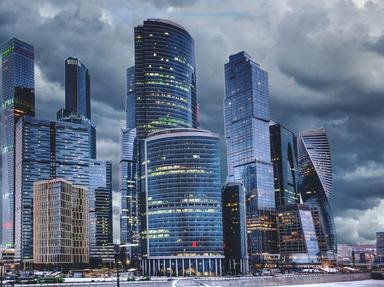Quiz Answer Key and Fun Facts
1. Founded in 968 AD and originally called al-Manṣuriyyah
2. Once named Christiania and moved locations in the 17th century
3. Second-highest national capital in the world at 9,350 feet above sea level
4. Largest city of the Dominican Republic founded by Bartholomew Columbus in 1496
5. Located on the Niger River, capital of a landlocked country forms its own "cercle" and district
6. Name roughly translates to "east capital"
7. Founded as Lourenšo Marques, southeast African city became capital after its 1975 independence
8. City named after Saint James and located on the Mapocho River
9. Namesake of tribe that lives nearby, means "large river" and "inhabitants"
10. City on the Gulf of Guinea used to support the African slave trade
Source: Author
ponycargirl
This quiz was reviewed by FunTrivia editor
spanishliz before going online.
Any errors found in FunTrivia content are routinely corrected through our feedback system.

